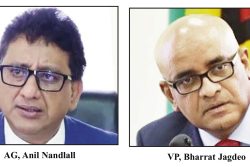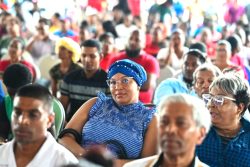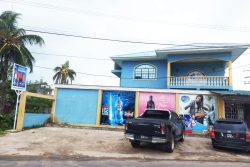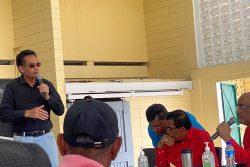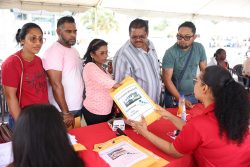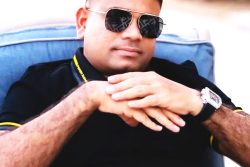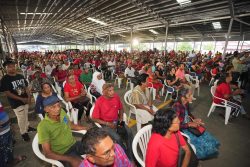One year before the 2015 general elections were held, few Guyanese might have been familiar with the name ‘Sandra Granger’. One year later, however, there are very few who are not immediately familiar with the name and face of Guyana’s current First Lady.
Over this past year, Mrs Sandra Granger has taken to the role of First Lady with consummate ease: from lobbying the political leadership behind the scenes on national initiatives to carefully reading the public mood on issues such as the public’s rejection of stringent dress codes at government buildings, Sandra Granger’s soft diplomacy and intellectual activism have immediately begun to transform the social landscape in Guyana and to breathe new life into organisations dedicated to championing women and children’s issues and family affairs.
Most recently, around the time public pressure was mounting for the government to relax the outdated standards on the dress code for public institutions, the First Lady faced the press to not only publicise her opinion on the matter, but also disclose her independent efforts to have the outdated rules changed.
“…People need to say let us remove these signs from government buildings but at the same time, people need to know that they should dress a certain way when they are going into an institution to do business” she told one media outlet.
Taking advantage of her interpersonal and diplomatic skills, the First Lady emerged as a reasoned voice in the matter. Her public statements followed private meetings with government officials, urging them to get practical about the dress code, and to take a sensible approach considering our climate, what’s respectable for a public office, and also the fact that comfortable clothing hardly fits the code.
Mrs Granger is the modern, activist First Lady with an official office, a public policy agenda that is complementary to the government, regular speaking engagements, and a strong social media presence. Yet equally important is her reputation as a professional and an intellectual, being previously employed at the Caricom Secretariat and the University of Guyana, and her philanthropic work in several communities prior to her husband taking office, and her demonstrated personal knowledge of national issues independent of both the President and his cabinet.
We’ve heard her sharp remarks concerning sexual violence and how cases are under-reported and poorly prosecuted, and her call for the system under her husband’s leadership to improve. She has spearheaded youth and women initiatives including having a key role in the recent STEM Guyana project.
There is no constitutional support for the office of First Lady in Guyana, and certainly no blueprint for how the job is done, but this provides adequate space for the office holder to carve out for herself one or more identifiable roles during her husband’s time in office.
Since Mrs Viola Burnham, whose role as First Lady extended beyond the traditional social advocacy which is expected and accepted, other First Ladies have taken up the role and made a positive impact in many areas, in addition to having a strong, quiet presence in the affairs of the state.
The previous First Ladies have had different roles during their time in public life – from the philanthropic work of Mrs Doreen Chung and Mrs Joyce Hoyte to the political activism of Mrs Janet Jagan who subsequently became the first female President of Guyana. More recently, we have followed the efforts of Ms Varshnie Singh to promote better healthcare and fund heart surgeries for young children, and just a few years ago Mrs Deolatchmie Ramotar’s work in communities struggling with domestic violence and suicide. We might mention that the shortness of the tenure of Mrs Yvonne Hinds as First Lady might not have allowed her to establish her particular mark, but she certainly did show the kind of flair for which she is known as the wife of the Prime Minister and her work with the Guyana Relief Council among other charitable organizations is well known.
Guyana can certainly boast that its First Ladies have served the country well over the years, particularly considering, as mentioned earlier, that there is no formal structure for the ‘Office of the First Lady’ as exists in other countries of which the United States of America is perhaps the best example, having a budgetary allocation, staff, and clear cut duties and responsibilities, including being the hostess to all events taking place at the White House.
Indeed, the role of the First Lady ranges from the non-political to the political, and especially in the case of Mrs Jagan, her activism and work would have underscored how a First Lady can participate in the political life of an administration. Mrs Granger, like Mrs Burnham and Mrs Jagan, is more vocal and visible; and she brings to the office soft leadership skills, confidence and power.
The President has publicly acknowledged her role as a wife and mother, loyal companion and friend, but he has also made a point of noting that she is his equal and stands not behind him, but beside him. Nothing she has done so far has indicated otherwise. What she has demonstrated is that a First Lady of energy and imagination can invest the role with purpose and take on meaningful responsibilities in the society.
